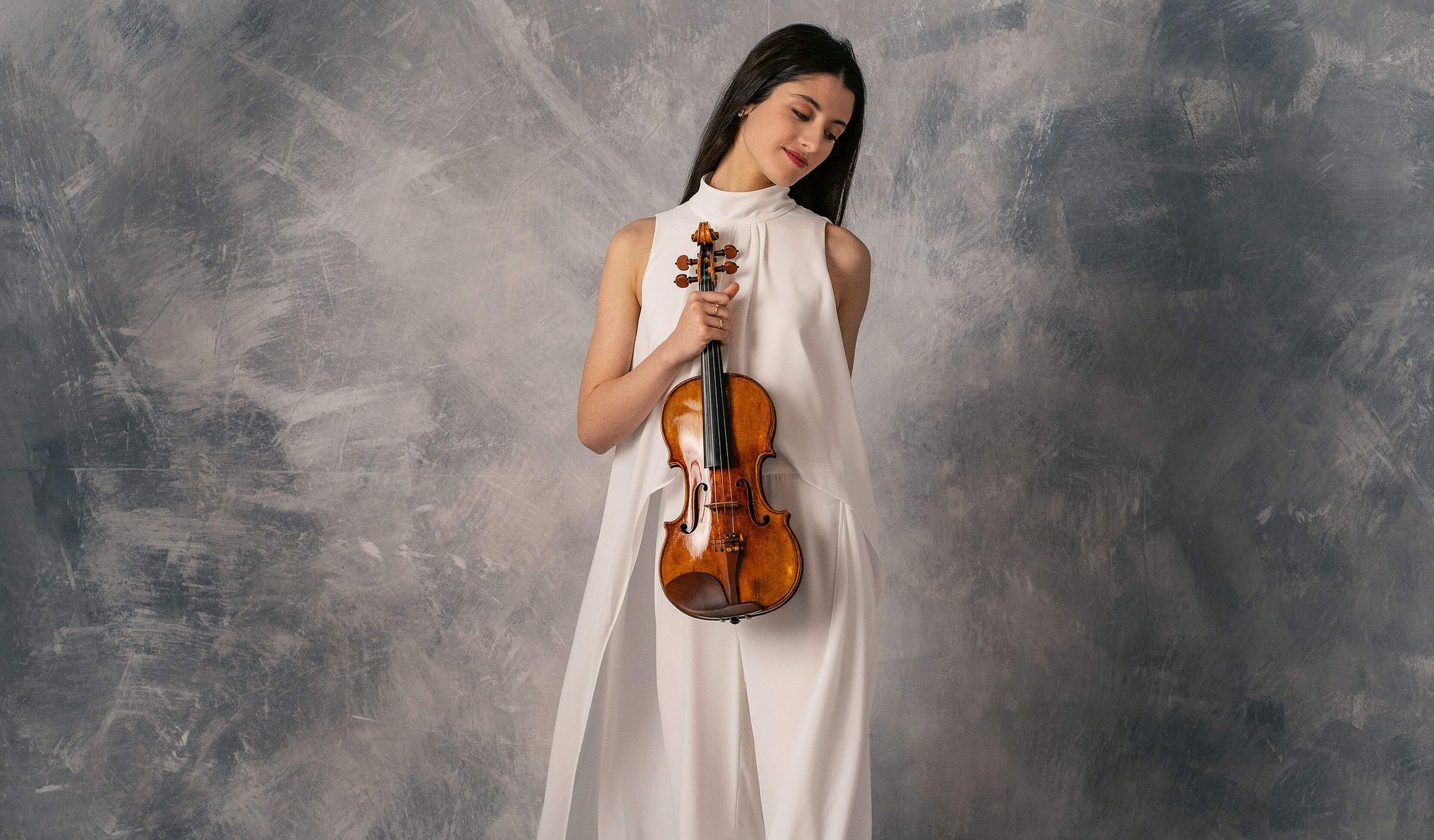

Orchestral concert: Castelnuovo-Tedesco, Lalo, Berlioz
Dueñas, Orozco-Estrada
Program
Featuring
Other information
The event is about 2.5 hours long.
About the event
An overture inspired by a Shakespeare play, a violin concerto paying tribute to Sarasate, and an autobiographical love story – this concert will have them all, in addition to a special program that will also include special artists. The Columbian-born senior conductor of the RAI National Symphony Orchestra, Andrés Orozco-Estrada, is known for his energy, elegance and dynamic spirit. Orozco-Estrada is also a violinist, which means he gets along famously with the soloist of the evening: born in 2002, María Dueñas is a Deutsche Grammophon contract artist and a favorite of The Guardian, The Times and the Strad – “the devil dressed in white.” A native of Granada, Dueñas will perform Mediterranean music by the Spanish composer Lalo. Before that, the program includes music by Italian composer Castelnuovo-Tedesco, and after, the music of French composer Berlioz, who created the romantic symphony genre.
Castelnuovo-Tedesco spent half his life in Italy and half his life in the United States, due to the second World War. He did not feel at home anywhere: “like a cloud,” he floated between the two continents. He did, however, find a home in Shakespeare’s art, composing songs, duets, sonnets, dance movements, operas and eleven concert overtures based on the English playwright’s works. He set the stories of The Taming of the Shrew, Twelfth Night, The Merchant of Venice, Julius Caesar, The Winter’s Tale, A Midsummer Night’s Dream, Antony and Cleopatra, Coriolanus, Much Ado About Nothing and As You Like It to music. His works use movie-soundtrack-like, fittingly arranged and colorfully illustrated phrases to depict Shakespeare’s well-known scenes.
Lalo heard Violin Concerto No. 1, by the legendary Spanish violinist Pablo de Sarasate, in 1874. The performance compelled him to compose a concerto that was explicitly based on Sarasate’s technical skill. His own Spanish heritage, the nationality of the violinist and the Spanish music fever infecting Paris after Carmen all resulted in a definitely Spanish piece of music. We already hear typical rhythms in the opening movement, and the scherzando evokes the seguidilla, the “Spanish waltz.” The intermezzo, which is yet another scherzo, albeit more reserved in tempo, was inserted by Lalo later. Following the humid, romantic slow movement, the composer forces his audience to wait for his finale; the entrance of the soloist thus becomes even more impactful and sweeping.
Episode in the Life of an Artist is the subtitle of Berlioz’ Symphonie fantastique, composed in 1830. The piece comes with a detailed program, which tells the love-story in five movements. The beloved woman is depicted as an obsessively recurring leitmotif, the figure of the so-called “idée fixe.” The lengthy opening movement, Daydreams – Passions, places the contrasts in the spotlight. The Ball is a waltz, increasing in tempo after a mysterious start. The pastoral Scenes in the Fields, based on the dialogue between an English horn and an oboe played off-stage, is proof positive that Berlioz picked up “where Beethoven left off.” The march music of March to the Scaffold starts out with a vision-like clarinet solo, followed by a celebratory execution fanfare. Finally, the story, clouded by opium, concludes with Dream of a Witches’ Sabbath, merging the leitmotif and the melody of Dies Irae.
Did you know? Castelnuovo-Tedesco’s overture premiered in Rome on March 31, 1935, with Bernardino Molinari conducting; Lalo’s Spanish Symphony premiered in Paris on February 7, 1875, with Pablo de Sarasate’s solo; Berlioz’s Fantastic Symphony premiered in Paris on December 5, 1830 with François Habeneck conducting; this will be the Budapest Festival Orchestra’s first performance of Castelnuovo-Tedesco’s overture; the orchestra performed Lalo’s Spanish Symphony most recently on March 7, 2012 in Antwerp (soloist: Renaud Capuçon, conductor: Iván Fischer); the orchestra most recently played the Fantastic Symphony on December 15, 2019 (conductor: Sir Mark Elder).
Contemporary events: The German parliament adopted the so-called Nuremberg Race Laws on September 15, 1935 / Mexican painter Frida Kahlo painted her Self-Portrait with Curly Hair in 1935 / Austrian composer Anton Webern’s piece Concerto for Nine Instruments premiered in Prague on September 4, 1935, with Heinrich Jalowetz conducting / The Liberal Party, created with the merger of the Deák Party and the Center-Left Party, was established on March 1, 1875, and would govern Hungary for the next 30 years / French painter Claude Monet painted his depiction Argenteuil in 1875 / French composer Georges Bizet’s opera Carmen premiered in Paris on March 3, 1875 / István Széchenyi’s work Credit was published in 1830 / French painter Eugène Delacroix produced his painting Liberty Leading the People in 1830 / Polish composer Frédéric Chopin’s Piano Concerto No. 1 premiered in Warsaw on October 12, 1830, with the composer’s solo / French author Stendhal’s (Marie-Henri Beyle) novel The Red and the Black was published in 1830